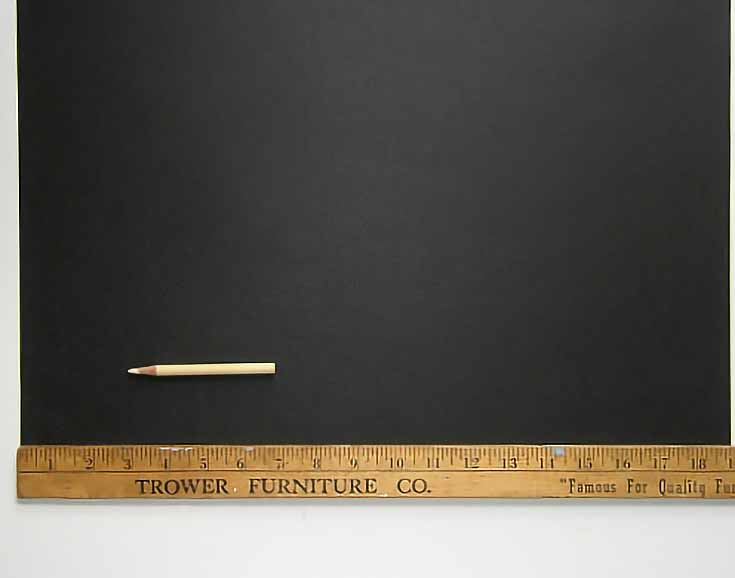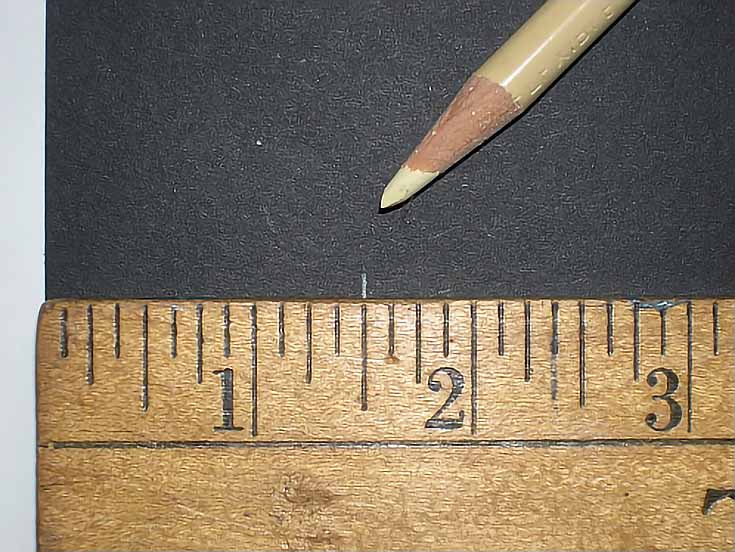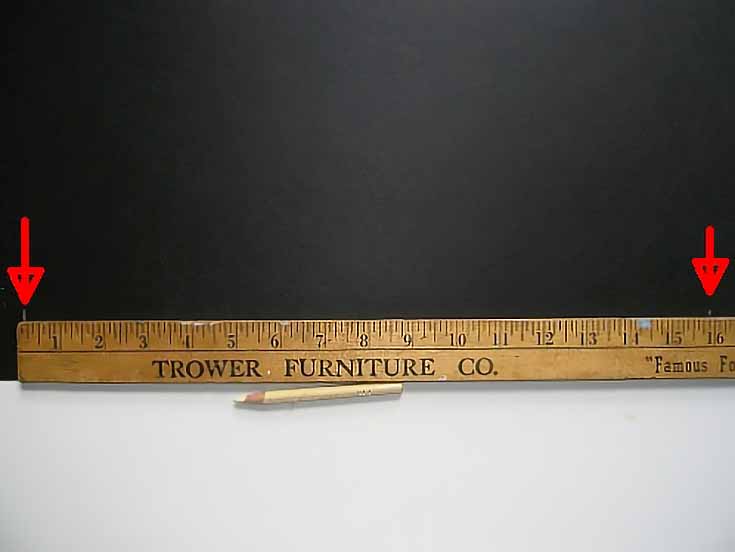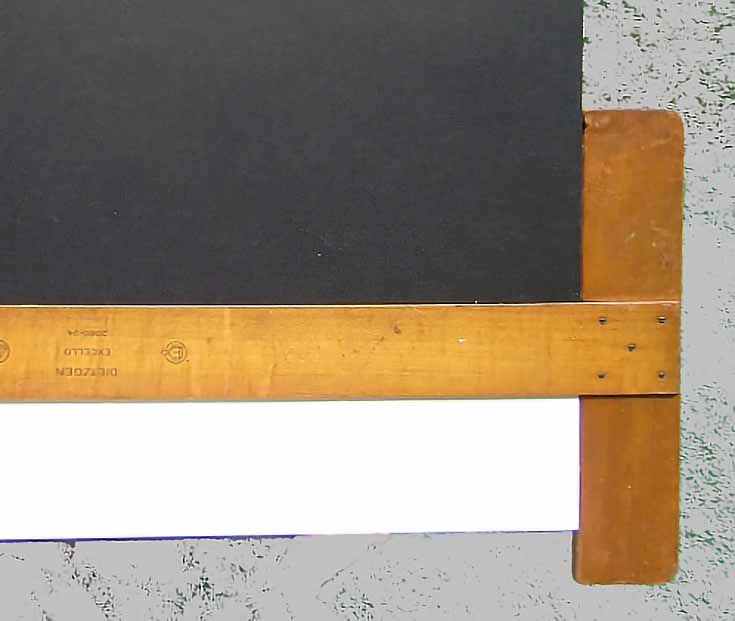When you’re getting started on a new project, one of the first things you’re likely to do is decide on the size and shape of the new artwork. Then, you’ll probably plan out a composition that will fit into those dimensions.
Once that work is done, however, do you know how to position your composition on the your drawing paper? (It may seem basic, but it’s actually pretty important!)
To demonstrate this process, I have a sheet of Strathmore Artist’s Paper 400 Series in Coal Black. The sheet size is 19×25 inches and I’m planning to use it for a 16×20 inch portrait. I want the portrait to be centered on the page and give the finished drawing wide enough margins to allow for matting and framing without cutting into the portrait.
Here’s how to do it:
1. Prepare your work area
Clean your working surface and make sure it’s dry—I used ordinary window cleaner and paper towel. After going over it twice with fresh paper towel, I allowed it to air dry a few minutes, just in case. The delay is a small price to pay compared to the cost of damaging a new sheet of art paper.
2. Gather your paper, ruler, and a pencil
Place the paper on the table so it lies flat and align a ruler along the bottom edge with the end of the ruler at one edge of the paper, as shown below.
It doesn’t matter which side of the paper you begin with (long or short). In this case, I began with the short side, so I’ll be measuring from side-to-side to start.
3. Figure out your left and right margins
To determine how wide each side margin should be, subtract the width of the composition you’d like to create (for me, that’s 16 inches) from the width of the paper (19 inches). The difference is 3 inches.
Split 3 inches in half to find out how wide each of the side margins should be. The result is 1-1/2 inches. Mark each side margin using that result.
Since I’m working with dark paper, I chose a Cream Prismacolor Thick Lead Pencil so that my marks would show up clearly. That color will also figure prominently in drawing the portrait, so it was a logical choice. (The lines will eventually disappear as I work on the portrait.)
4. Verify your measurement
In order to check that your calculations are correct, move the measuring stick so one end is on the first mark (the left arrow). Measure from one mark to the next (right arrow). For my project, it needs to be 16 inches. If you don’t see the length that you expected, it’s time to check your math!
This may seem like a needless step, but it is important. If this first measurement is off, subsequent measurements are likely to be incorrect, as well. You could end up with borders that are not square and a drawing that will not match a mat opening.
Better to be careful now than to have to do it all over or to end up with a drawing that’s out of square.
5. Figure out your top and bottom margins
Repeat the process, but this time lay out your ruler vertically. Subtract the height of your artwork (for me, 20 inches) from the height of the paper (25 inches), then dividing the result by two.
In this case, I found that my top and bottom margins needed to be 2-1/2 inches. I marked 2-1/2 inches from the top and 2-1/2 inches from the bottom and verified the calculations by measuring from one mark to the other.
6. Draw your borders
Now that all four corners have been marked and verified, it’s time to connect the dots and create a border. To do this, I always use either a template or a t-square.
a) Use a template to create your borders
If you have a mat with outer dimensions of 16×20, that will do just fine. I laid mine against the marks I’d made on the paper, then used a rule again to verify that it was dead center and perfectly square. When it was exactly where I wanted it, I could draw the edges for the portrait by carefully drawing around the edges of the mat.
Hold the template down securely by placing a hand on the side of the template against which you’ll be drawing. The last thing you want is for the template to move while you’re drawing. It’s also important to use a very sharp pencil so the lines you draw are clear. Use medium to medium-light pressure. A slow, steady, unbroken stroke is best.
b) Use a t-square to create your borders
If you don’t have the proper size of mat to use as a template, you can always use a t-quare. Mount the paper to a square back board (making sure the paper is perfectly lined up with the board’s edges) and then align your t-square as well.
When it’s properly positioned, use a pencil to draw a line from one mark to the next.
All you really need for this method is a flat surface with square corners. If you don’t have access to a back board with square corners, a drawing table or desk is fine.
In the end, what you’re looking for is a clean, easy to see border on your drawing paper. The border should be drawn dark enough to see through the initial stages of work, but it shouldn’t be so bold that you can still see it in the finished work, or that you won’t be able to erase it.
If you’re careful enough, you probably won’t have to make corrections, but just in case, you want to be able to erase the lines you draw.
Now that you’ve got your margins set up (and you know they’re correct) your paper is ready and you can get to work on the fun part—drawing!
This post may contain affiliate links.





